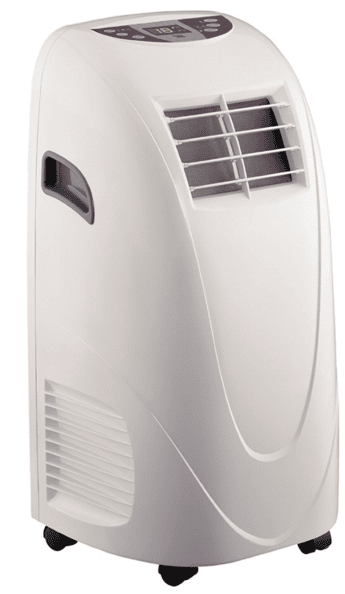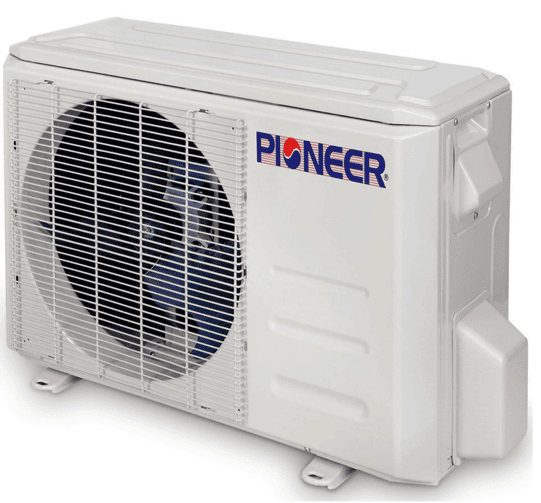When people think air conditioners they either think of the traditional split system that you find in most homes or they think of the window air conditioners that you see mounted in apartment buildings, in older homes that do not have duct work routed in them, or in homes in the northern part of the country that normally don’t have a need for air conditioners.
Most people do not think about portable units, let alone ductless units when considering a new air conditioner for their home. Their go to is usually the window unit. In this article we’re going to do a quick look at the benefits and cons portable and ductless mini split air conditioners as well as what type of system is going to be the best for you.
BTUs
First thing’s first. Before we get into what the differences between these two types of air conditioners it is best to understand the sizes that air conditioners come in. If you’ve already done some research on your own then you may have noticed that air conditioners come with a BTU rating. BTUs, or British Thermal Units, are a measurement of the air conditioner’s ability to remove heat. The higher the number the more power your unit will have.

Don’t fall into the trap though that bigger is always better. If you get an air conditioner that is too big then you will be paying extra expense on energy cost as well as the possibility of ending up with hot and cold spots throughout the room due to dehumidification issues. On the inverse of this, if you purchase a unit that is much smaller then you need then the air conditioner will be running constantly causing you to pay more in energy bills. On top of that your room will never fully reach the desired temperature.
The typical rule of thumb when determining the right BTU size for your room is thirty BTUs per square foot of space to be cooled. Finding out the square footage of your room is relatively easy. All you have to do is measure the width and length of the room and multiply the numbers together. So, as an example let’s say we have a twenty by twenty room. If we do the math we have a four-hundred square foot room. In this example we would need a twelve-thousand BTU air conditioner.
Portable Air Conditioners
Ok, so now that we’ve got that out of the way let’s really look at these systems. We’re going to start out with portable systems. Portable air conditioners are just that, portable. What that means is that they can be moved from one room to the other. This makes these units very easy to move with you across the house. If you are looking to cool different rooms throughout the day then this would be the unit for you.
The setup and install is very easy. All you need to do is select the area you that you want cooled, place your unit, and then route the exhaust pipe to the nearest window. When the pipe is routed you will then fit your window with the seal to ensure no hot/cold air escapes. Once this is done all you have to do is turn it on and set the desired temperature.
Portable air conditioners are an ideal system for those that need an air conditioner every once and a while. I’m originally from Michigan and if you go far enough north in Michigan you’ll find many houses that don’t even have air conditioning installed. Most of the time they just have a furnace or a wood burning stove. There are times however where the summer gets exceptionally hot for a few days or a week out of the year. This is where a portable system would be ideal.The setup is quick and easy and before you know it you have your room being cooled off.
The price on portable air conditioners usually aren’t too bad. Depending on the size of the model you purchase you could spend a few hundred dollars all the way up to one-thousand. It’s up to you if you think you need that larger unit or if you want a system with a lot of bells and whistles.
Now there are a few downsides of portable systems as well. The first is that they can get in the way. The unit will be in your room along with the exhaust hose running to your window. This can annoy some people and depending on where you have it positioned it may not look the most appealing.
Another thing to to consider is that the sizing of portable units are typically smaller than that of a multi-split system. I see portable units more orientated to cooling a room or two, but not an entire home. Portables are a temporary measure and shouldn’t be used as a full time air conditioner all the time. If you are looking for something like this then you may want to go the mini split route.
A portable system will most likely not last as long as a ductless system. As I mentioned earlier, I see portable units as a temporary system or a gap fill during a really hot month. If you are looking for longevity in a system then you’ll want to go the ductless mini split route.
Ductless Mini Splits
The ductless, or mini split systems, can be a great addition to your home. I like to think of these types of products as an in between. You have your standard and traditional split systems that you see in most homes and then you have your window or portable air conditioners as well. The ductless systems give you that in between that allows you to get a powerful air conditioner without having to spend several thousands on a traditional split system.

With a ductless system you can get much more power or BTUs then you would with a standard portable air conditioner. Most portable units began to taper off around fifteen thousand to eighteen thousand BTUs. A reputable ductless system can go as high as thirty-six thousand BTUs. That is nearly double the power of a portable or even a window unit.
Along with the extra power of a mini-split system you also get a much more efficient system. Air conditioner efficiency is measured by what’s known as Energy Efficiency Ratio or it can also be measured by Seasonal Energy Efficiency Ratio. These two numbers provide a measurement on how efficient your air conditioner is. When looking at portable air conditioners the typical SEER you’ll see is around ten to twelve. Ductless mini split systems are whole other story with a SEER number coming in around fifteen to twenty, and in some cases even as high as twenty-five. That means that a ductless system is significantly more efficient then your standard portable air conditioner which will result in you saving energy costs month after month of use.
The last Pro that I’ll mention on ductless systems before we move on to the Cons is that most of these systems come with a built in heat pump and electric heater. That means that not only will you have your air conditioner throughout the summer but you’ll also have a heating supplement throughout the winter. If it gets too cold outside for the heat pump then the electric coils will kick on and you’ll be just as toasty.
There are two big downsides to ductless mini split systems. The first is the cost. We mentioned earlier that portable systems can be a couple hundred up to a thousand dollars. A mini split system will usually START at around five-hundred dollars and can top out at around fifteen-hundred dollars, sometimes even more. This price can scare a lot of folks away from purchasing a ductless system, but there is still more expense after that.
Along with the high price point of ductless systems the installation can be quite difficult. So difficult in fact, that it is recommended to hire a professional HVAC technician to come to your home and install the system. A mini split system comes with three main parts that you will have to install. The first is what’s known as the air handler. The air handler is what is mounted on the inside of your home either on your wall, floor, or ceiling. This is the unit that intakes the hot air and releases the cold air into your home. The second part is known as the condenser. The condenser is the largest of the parts and has to be mounted on the outside of your home. Some users opt for a concrete platform while others opt for mounting brackets drilled into the side of their home.
Here is where things begin to get a bit tricky. The third component of your ductless system is the copper refrigerant tubing. This is the pipeline that the refrigerant will flow through back and forth between the condenser and the air handler. Remember folks, that air conditioning is an endless cycle of the refrigerant flowing back and forth and changing states from liquid to vapor and vapor to liquid. Installing the tubing can be difficult as you have to ensure that you do not bend or break any of the copper tubing. If you do so then your system will be leaking refrigerant and will not be able to cool your home. On top of that, you will have to drill a two to three inch hole in your wall for the refrigerant pipe to be routed to the condenser. You will then have to secure the pipe to the condenser and the air handler and make sure that there is no possible leakage.
We’re still not done yet though folks. Most ductless systems come pre-charged with nitrogen instead of refrigerant. The nitrogen will have to be vacuumed out of the system and then replaced with the refrigerant. Before that is done though, it is best to check your lines and connection points for any leaks. The most common practice here is to take soapy water in a spray bottle and spray it against the connection points. If you see any bubbles then you have a leak. Otherwise, you’re good.
Now it comes time to vacuum out the nitrogen and replace it with the appropriate refrigerant. If the wrong refrigerant is used then you can permanently damage your air conditioner. Also, as of January 1st, 2018 HFC refrigerants are now highly regulated and you will need to be 608 certified in order to purchase.
See why we need a professional HVAC technician? A professional install will end up costing you even more on top of the cost of the ductless system. You could be looking at a few hundred dollars, or something much higher depending on who you have come out to install.
Conclusion
So folks, what will it be? What do you believe is the best fit for your home? Are you looking for just something to get you through a few hot weeks? Then I would suggest the portable. Or, are you looking for something that will get you through the summer and even provide some heat during the winter? If that’s the case then I suggest you purchase a ductless model. Check out our recommended products below:
Our preferred portable air conditioners are:
- Honeywell MN10CESBB 10,000 BTU Portable Air Conditioner
- Black & Decker Portable Air Conditioner in Various BTU Sizes
- Honeywell MN12CES 12,000 BTU Portable Air Conditioner
Our preferred ductless mini split air conditioners are: